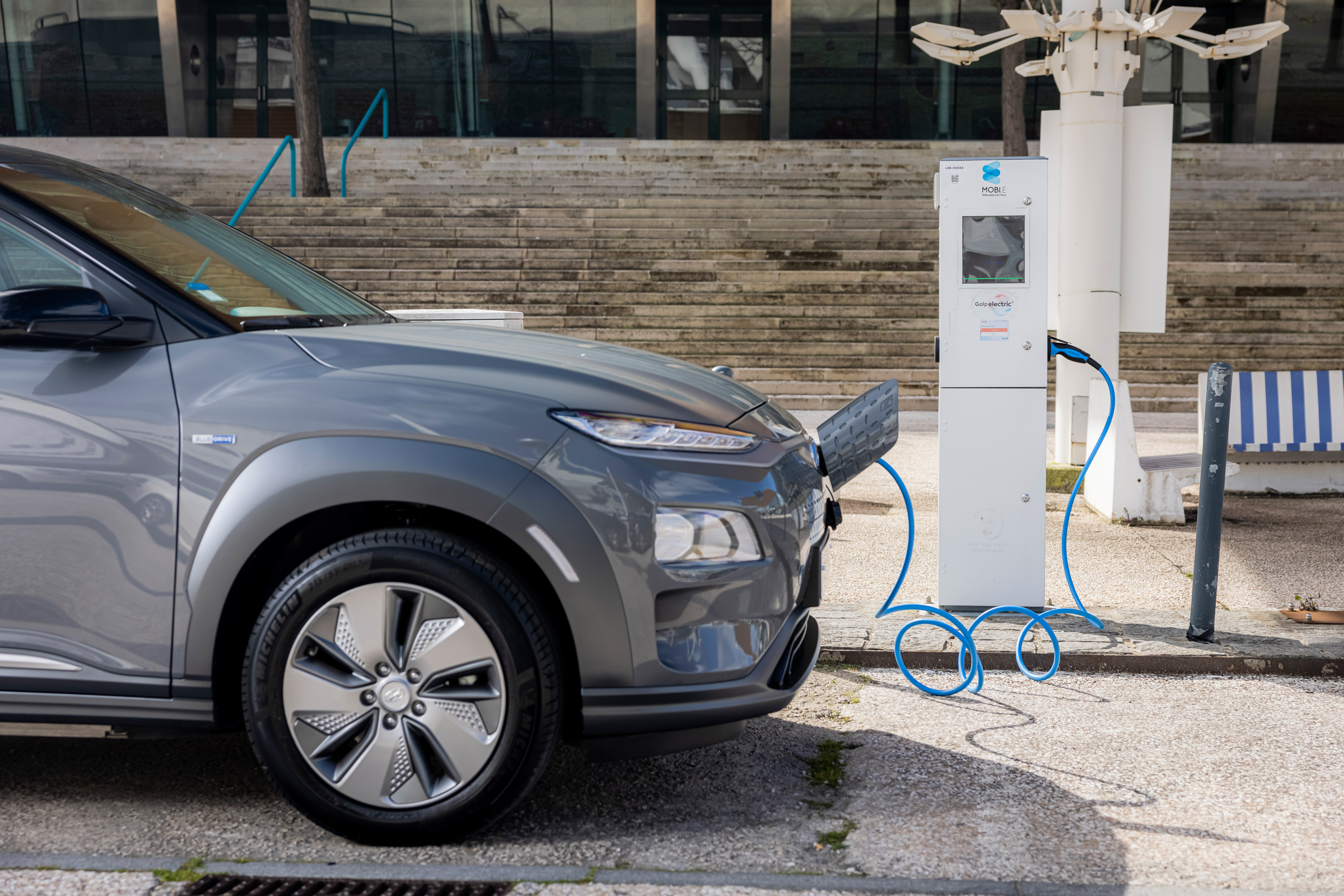Electric mobility is an important contributor for sustainable mobility and for increasing energetic efficiency in transport. It is expected that this contribution be ever higher, as both the autonomy of electric vehicles rises and the number of charging stations nationwide. Thus, leading to a growing number of users from this new kind of mobility.
Advantages - MOBI.E
Advantages of electric vehicles
They are less polluting, presenting an excellent performance, given that the torque is constant, being immediately available, the autonomy is ever higher. In addition to the availability of the charging network, and the maintenance costs are much lower if compared to combustion engine vehicles.
The LeasePlan "Car Cost Index" study, released in December 2022, concludes that it is cheaper to own an electric vehicle than a similar combustion-powered vehicle. In the specific case of Portugal, the monthly charges may be up to 38% lower compared to models powered by petrol or diesel.
Charging prices are also lower than the cost of refuelling a combustion-powered vehicle. According to this study, charging costs represent 15% of the total cost of ownership of an electric vehicle, while for petrol and diesel drivers, the figure is 23% and 28%, respectively.
When analysing the D1 segment (medium-sized family vehicles), the most popular in company fleets, LeasePlan concludes that, on average, the monthly cost of an electric vehicle is 898€, that of a diesel vehicle in the same range is 1,364€ and that of a similar petrol vehicle is 1,466€. These differences are 34% and 38.7% respectively. Plug-in hybrids cost an average of 1,289€ per month. Examples of cars in this segment are the VW Passat, the Hyunday Ioniq5 and the Ford Kuga.
The study, which reflects the reality of 22 European countries, takes into account the various costs of owning a car, such as energy or fuel, taxes, financing charges, insurance, maintenance and the depreciation of the vehicles' value. It is assumed that the car is owned for four years, travelling on average 30 thousand kilometres per year.
The same trend can be seen in the other commercial segments, with electrics becoming increasingly competitive, LeasePLan concludes.

Zero emissions
If we do a comparative analysis of the entire life cycle, we conclude that the electric vehicle is, on average, between 66% and 69% less polluting than gasoline vehicles (source International Council on Clean Transportation); furthermore, in Portugal the production of electricity is increasingly coming from renewable sources (on average, the energy mix is of 50%, but there are days when it reaches 80% - https://app.electricitymap.org/zone/PT)
Less maintenance
With an electric vehicle, there is no need for liquid fuel nor oil changes. In fact, the maintenance costs associated to the internal combustion engine are eliminated, which represents an enormous saving on the user’s wallet.
Electric mobility: yes or no?
Check in the video the advantages of adhering to electric mobility, every day, in the city.
Electric Vehicle
Veículo a Combustão


Categories
-
Emissions
-
Performance
-
Costs
Foi utilizado um veículo de gama média, matriculado em 2020, para esta comparação. Os resultados analisam todo o ciclo de vida útil do veículo, desde a sua produção (fonte: Transport & Environment).
Electric
Produz, em média, 84 g de CO2 por quilómetro.
Uma das coisas que mais se nota quando se conduz um veículo elétrico é o silêncio, que torna a experiência mais relaxante.
Electric
A potência máxima está disponível assim que se acelera o veículo
A manutenção do veículo elétrico é bastante mais simples: não tem óleo de motor para substituir nem velas e, devido à travagem regenerativa, os travões e os pneus são bastante poupados.
Electric
According to the ERSE study "Comparison with other charging and motorization options", it spends on average between £1.96 and £3.29 to charge 100 km at home and between £6.28 and £6.76 to charge on the public Mobi.E network
Foi utilizado um veículo equivalente a gasóleo e a gasolina, matriculado em 2020.
Diesel
Produz, em média, 233 g de CO2 por quilómetro.
Petrol
Produz, em média, 253 g de CO2 por quilómetro.
O ruído do motor é uma constante quando se conduz um veículo a gasolina e ainda é mais notório num veículo a gasóleo.
Diesel/Petrol
A aceleração é feita de forma progressiva através da caixa de velocidades
Num veículo a combustão, o óleo de motor tem de ser substituído (a cada 10.000 quilómetros), além das pastilhas de travão, pneus e velas do motor. Em média, os gastos anuais de manutenção triplicam.
Diesel
On average, you spend 9.49 euros to cover approximately 100 kilometers, considering a consumption of 6 liters
Petrol
On average, you spend €12,28 to cover approximately 100 kilometers, considering a 7 liters consumption


